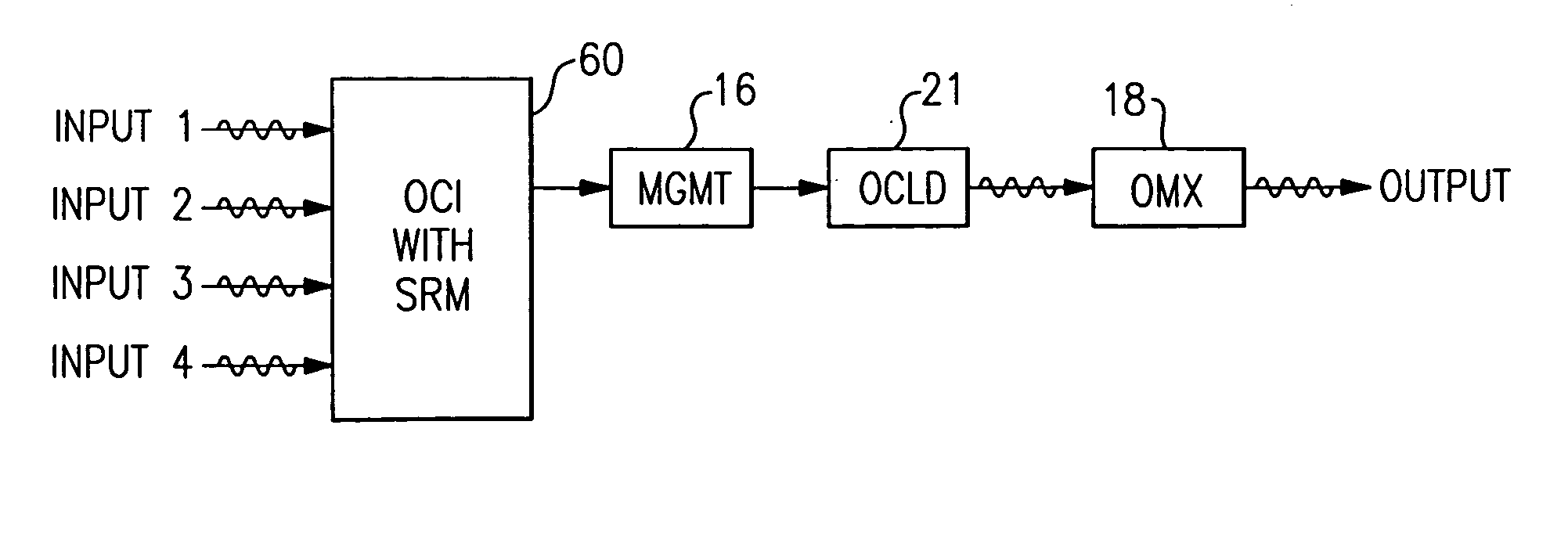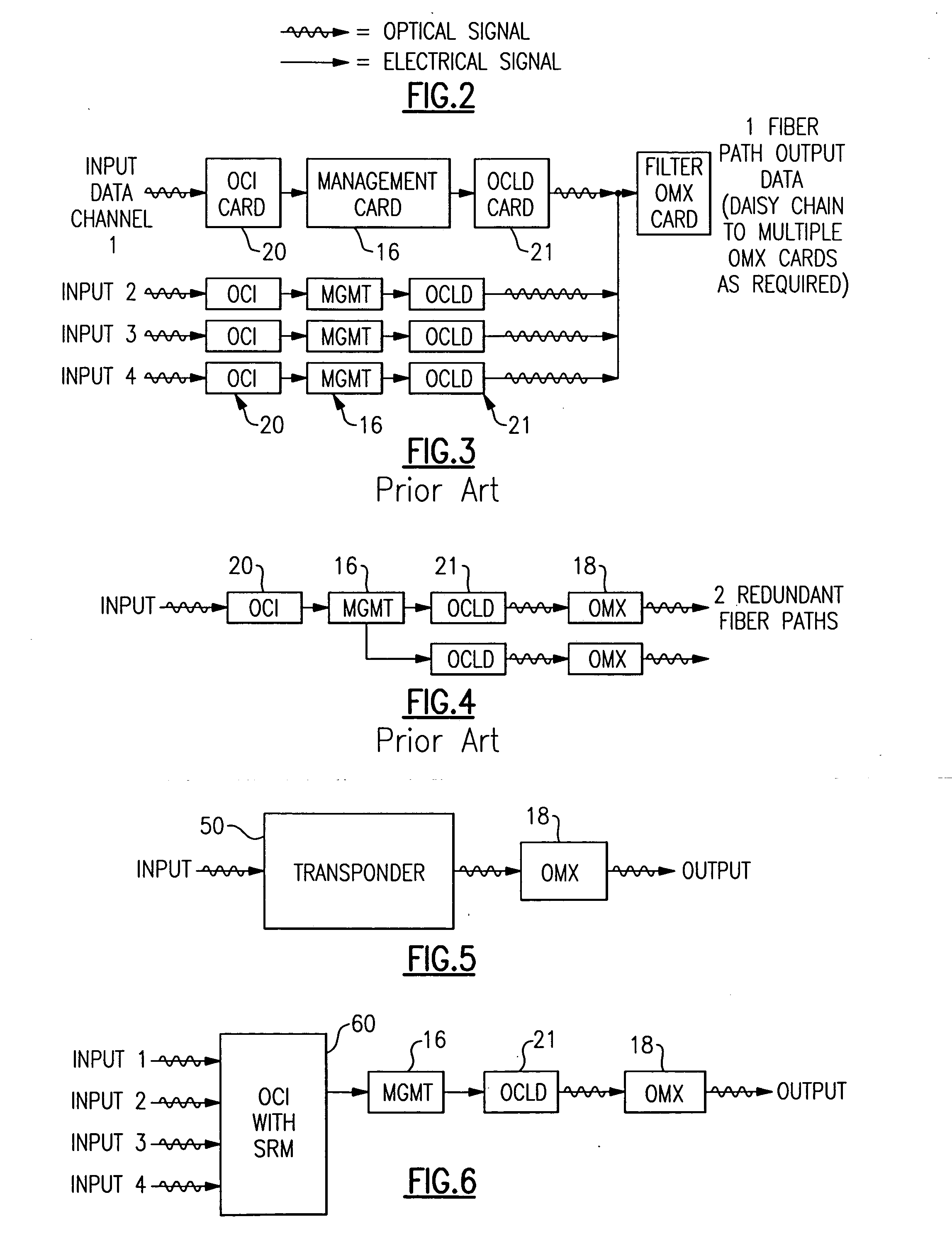[0017] It is an object of the present invention to provide a configurator to optimize the Dense
Wavelength Division
Multiplexing (DWDM) card placement when using a (to be explained)
transponder. As shown in FIGS. 2-4, the previous DWDM product required two separate cards for each channel (a
client side or OCI card 20, and a network side or OCLD card 21). These two functions have been combined into a single card, called a
transponder. The transponders are used to provide new features for the product, such as new protocol support. This also doubles the number of channels which can be accommodated per shelf since they plug into the same slots used by the Optical Channel Interface / Optical Channel
Laser / Detecter (OCI / OCLD) cards. Thus, when an older channel is being upgraded or repaired, and two of the older cards can be replaced by one
transponder card, it is necessary for the configurator to order a transponder card and a blank card (the blanks are required as placeholders in the DWDM shelf to maintain uniform
airflow and protect against dust
contamination) instead of the previous pair of OCI / OCLD cards. When a shelf is upgraded in this way, the configurator must also re-compute the total available network capacity for future upgrades. Another embodiment is a one slot transponder added to the shelf, for example, rather than requiring installation of a new shelf with two open slots for the two card solution. However, it is possible that a two card solution would be required anyway (not all protocols are supported on transponders). The present invention can automatically identify these cases from customer input. The ability to automatically search for a transponder card option when a configuration is requested, and modify the card placement accordingly, represents new functionality in the configurator which was previously not available.
[0018] It is another object of the present invention to provide for the fact that some cards now support more than one port, and different protocols can be mixed and matched on different ports. For example, previously each OCI / OCLD pair supported only one protocol. A new sub-rate mux (SRM) card has four ports, and supports a mix of four different protocols. The configurator recognizes and tracks this condition, so that the proper number of cards are ordered. These conditions have been addressed by assigning special characters to the four digit feature codes described earlier. For example, previously the
feature code used two digits to determine the card protocol and two to determine shelf location. The last two digits are modified to special characters, for example 99, which are interpreted as transponder cards (able to
plug in a single slot, any shelf location), or 88, which is interpreted as an SRM card (able to plug into available OCI card slots, but counts for up to four ports of supported protocols when calculating shelf capacity). Mapping the special card functions into a two digit code preserves the legacy configurator structure and enables automatic configuration and placement not previously possible. A four digit
feature code offers advantages over longer or more redundant mapping alternative embodiments.
[0020] Another object of the present invention is to validate the topology on optically amplified networks. There are three ways to increase the supported distance on a DWDM link; (1) use adapter cards with longer reach
optics (2) install optical amplifiers along the link path, (3) combine the previous two and use amplifiers together with enhanced reach adapters. These options all have different hardware configuration requirements; for example, option 1 requires an enhanced adapter card at both endpoints of the link, plugged into the same slot positions, while option 2 requires allowing for open slots in a shelf's east or west side. The configurator allows the user to specify only the distance between sites; the
software then computes whether or not extended distance features are required, and if so it computes the
relative cost of each of the three options shown above and recommends the lowest cost solution.
[0021] It is another object of the present invention to provide for vertical integration of this tool with the
software for planning, ordering, manufacturing, and installing the network. This is a powerful feature which allows significant
cost savings in the manufacturing and service / installation process.
[0022] It is another object of the present invention to provide for
wavelength reuse and sub-
wavelength reuse. The configurator plans for networks to re-use wavelengths in a meshed ring environment rather than incur the cost of installing new wavelengths that may not be necessary.
 Login to View More
Login to View More  Login to View More
Login to View More 


